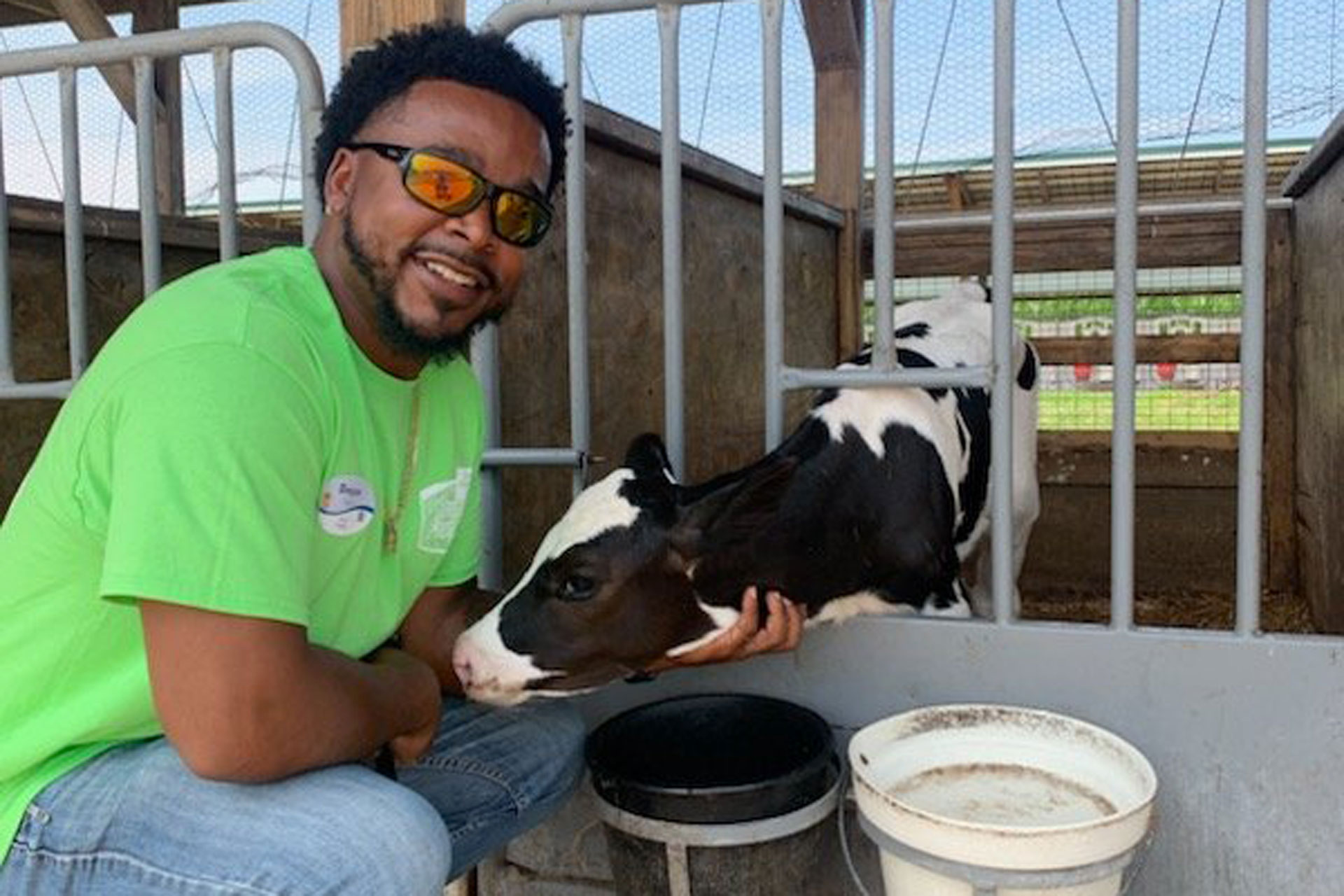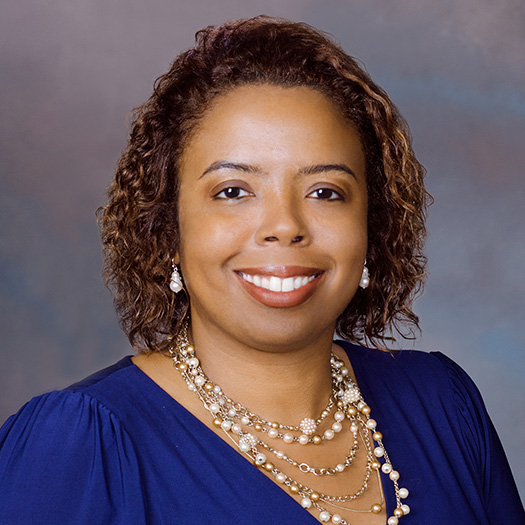RURAL AMERICA: A Treasure of ASSETS
November 9, 2023
Why Rural Matters to the Fed
By Jennie Blizzard, Fed Communities
When the economy works for everyone, we all benefit. Workforce development, access to high-speed internet, and access to affordable housing and quality early care and education are just a few factors that affect how we work, live, and play.
Community development staff at the Federal Reserve work to understand the challenges and opportunities in communities. The Fed’s Rural Learning Community (RLC) shares knowledge about what affects rural communities and how best to foster opportunity in rural areas. Andrew Dumont from the Board of Governors, Samantha Evans from the St. Louis Fed, and Jason Smith from the Richmond Fed lead the RLC. Andrew, Sam, and Jason share insights about the place of rural communities in our economic landscape.
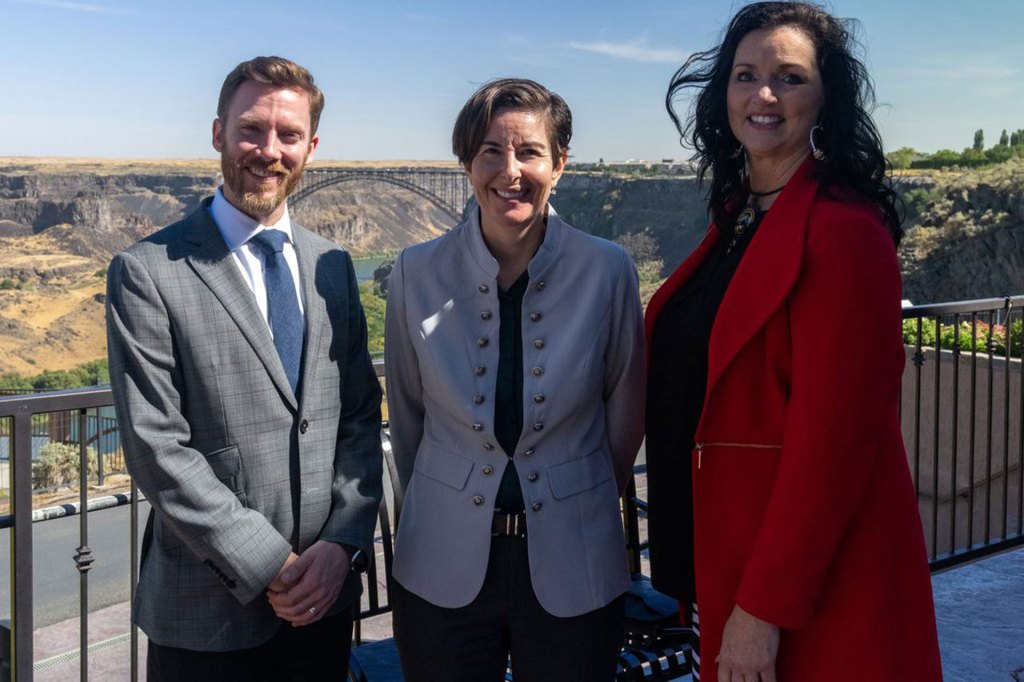

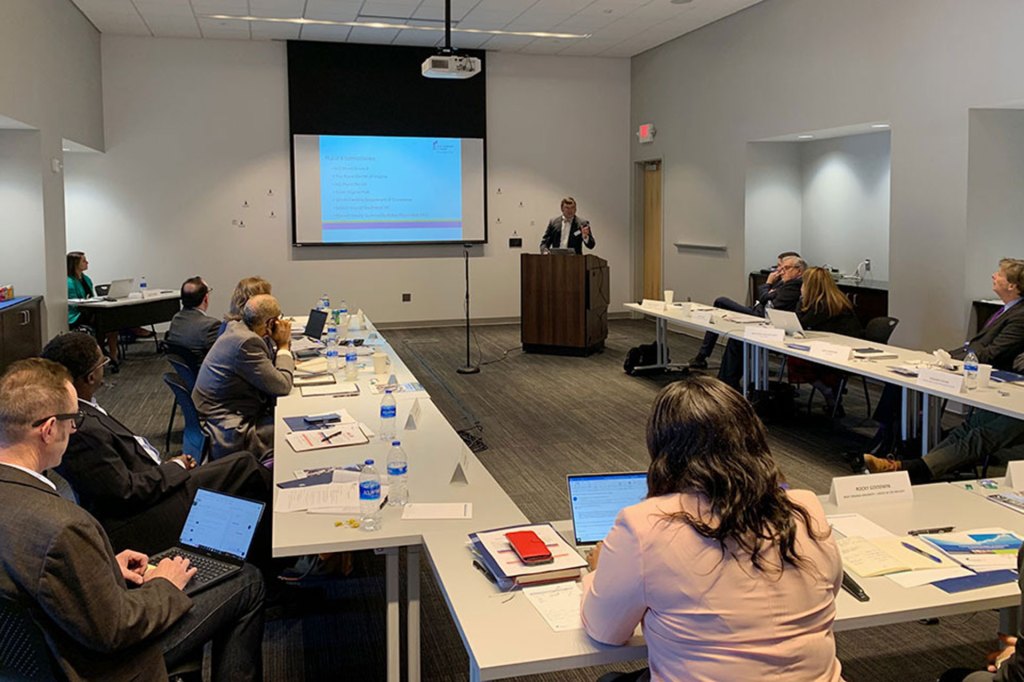
How should we define rural? Who lives there? What assets are present in rural communities?
There’s not a one-size-fits-all definition of a rural community. Agencies and organizations define rural differently. In most definitions, it’s considered a less densely populated area that is often relatively distant to major urban centers. Like urban areas, many rural communities are racially diverse.
Rural communities have many assets that can differ by community. Some rural areas have top-class universities or colleges. Others have extensive manufacturing, robust energy production, or strong tourism and recreation industries. Rural communities have people who love where they live and are deeply committed to the success of their hometown. The Fed’s RLC embraces the multiple meanings of rural in our approach to community development and respects the ability of communities to define rural for themselves as they create their own stories and narratives.
Why does rural matter to the economy? Why should we care about rural communities, even if we don’t live in them?
Rural places are critical to the economy. For example, rural areas produce most of the food we consume. They provide the lumber and other forest products used to build our homes and household furniture. These areas also supply the energy we consume daily. Many entrepreneurs and business owners call rural places home. As our economy continues to change, rural areas offer key lessons and insights that can be useful no matter where you call home.
In addition, the health and well-being of rural areas and their surrounding urban regions are deeply connected. When the economies of rural and urban regions are integrated and work well together, both areas perform better than if only one functions well. As a nation, it’s important to recognize how both economies are linked to each other’s success and the overall economy.
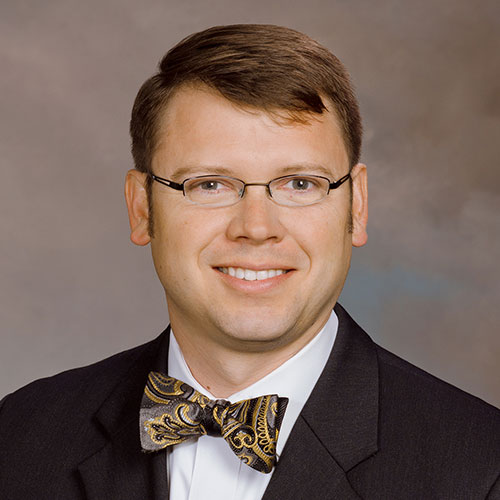
“In rural communities, there are often gaps in the ability to seek investment and in the availability of certain types of investment capital needed for community and economic development. Rural communities need access to capital to thrive.”
– Jason Smith, Senior Advisor, Richmond Fed
Why do rural places matter to the Fed?
Rural places are key to reaching many of the goals Congress assigned to the Fed to benefit the American people. For example, Congress asks the Fed to achieve maximum employment. Yet compared to the rest of the nation, certain rural communities have some of the lowest levels of their population working, including among prime working-age individuals (between 25 and 54 years old).
This holds true even when we compare high-poverty rural communities to high-poverty urban communities. Therefore, it’s critical the Fed understands why rural areas have consistently lower employment levels and find opportunities to advance our maximum employment goal. In addition, residents in many rural areas have less access to critical financial services, which reduces the effectiveness of the Fed’s monetary policy.
Employment-to-Population Rate by Race/Ethnicity, 2021
| Men | Women | |||||
|---|---|---|---|---|---|---|
| Race/ethnicity | Metro | Nonmetro | Diff. | Metro | Nonmetro | Diff. |
| White alone | 77.3 | 71.2 | 6.1 | 68.6 | 64.6 | 4.0 |
| Black or African American alone | 64.1 | 46.0 | 18.1 | 67.0 | 57.5 | 9.5 |
| American Indian or Alaska Native alone | 66.7 | 51.3 | 15.4 | 59.8 | 52.6 | 7.2 |
| Asian alone | 75.3 | 70.6 | 4.7 | 65.6 | 62.7 | 2.9 |
| Some other race alone | 72.1 | 63.0 | 9.1 | 59.7 | 57.3 | 2.4 |
| Two or more races | 74.9 | 68.1 | 6.7 | 63.4 | 59.0 | 4.4 |
| Hispanic or Latino | 75.0 | 68.2 | 6.9 | 61.2 | 58.5 | 2.7 |
| Total Population 16 to 64 years | 75.3 | 70.6 | 4.7 | 67.2 | 63.3 | 3.9 |
What do rural communities need to thrive?
It takes public-private partnerships, local leadership, and intentional actions. Rural communities need a highly collaborative, tailored, and inclusive approach to manage adversity and increase resiliency. Community-based organizations that serve rural areas and reflect the community are great ways for rural communities to align resources and capital for shared economic success.
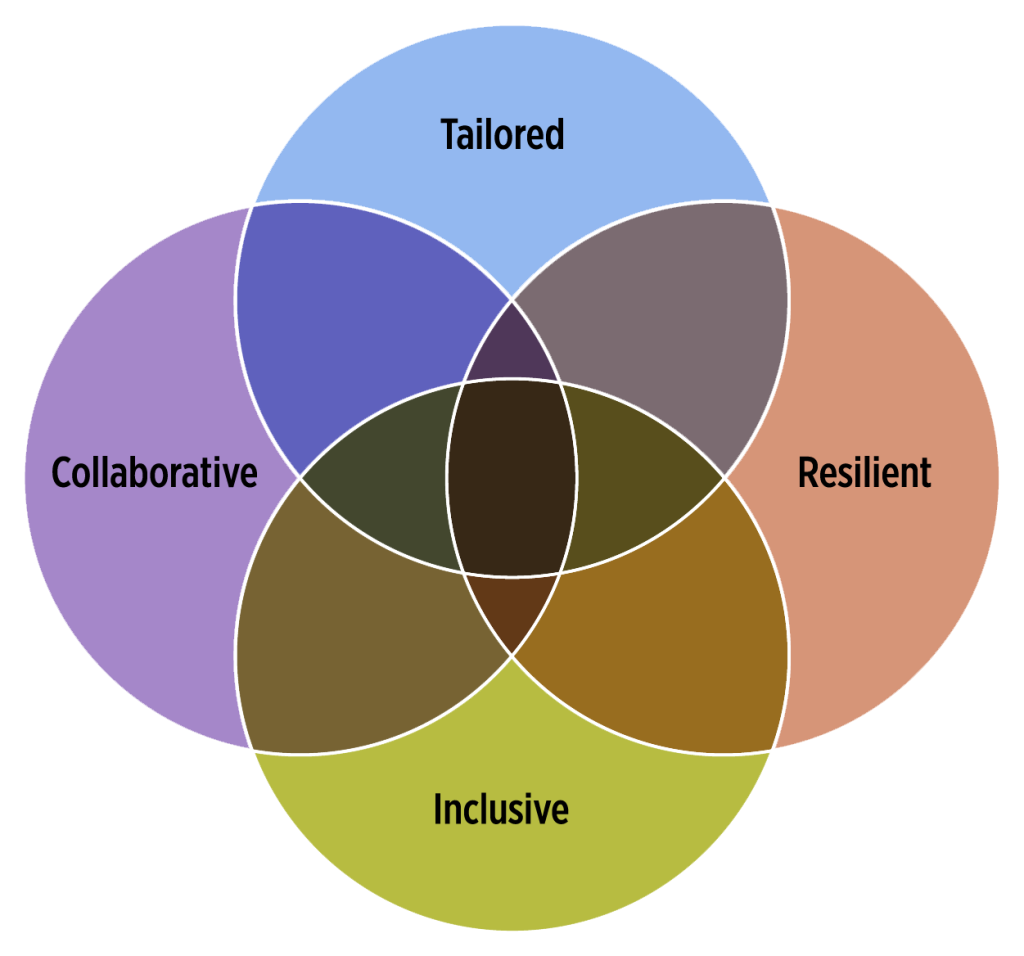
The “TRIC” framework proposed in the recent Fed book Investing in Rural Prosperity outlines an approach that is tailored to the specific goals, assets and organizational infrastructure of the community; designed to be resilient to changing circumstances; intentionally inclusive about who is at the decision-making table and who benefits from local development; and created and carried out through a collaborative process.
What’s a common misconception about rural communities?
A very common one is that they are communities where everyone is a farmer and no innovation takes place. In fact, rural innovation looks different from what we envision. It may be an energy company that develops new techniques to more efficiently access resources to power the nation. It may be an artist who uses materials in new ways or tells rural-focused stories that result in beautiful art to lift the human spirit. Rural communities are incredibly innovative and creative. Like their urban peers, they have always pushed boundaries and come up with new ideas. Another common misconception is that everyone in rural America is white. Rural communities can be diverse, with people from different cultures, races, ethnicities, religions, and walks of life.
Tell us a rural success story.
The Partners for Rural Transformation (PRT), a coalition of Community Development Financial Institutions (CDFIs), works to secure resources needed to respond to challenges facing their rural communities. While the pandemic brought many obstacles, Communities Unlimited (CU), one of six CDFI’s leading the PRT, ramped up its services by using its proven small-business lending model and business support services to help several entrepreneurs and small business owners save more than 140 jobs. CU continues to work with small businesses, including Black farmers. CU helps them build farm capacity and connects them with market opportunities where they can sell wholesale. Another organization, the Community Foundation of the Ozarks, leads wealth building initiatives and projects in their region to help preserve communities, keep family farms, and retain young workers.
What opportunities do you see for rural communities?
Our economy is changing in ways that can benefit rural communities. One shift is the transition to a cleaner-energy economy which offers growth and innovation opportunities as well as potential environmental benefits. Another is improving domestic supply chains in critical industries so rural communities can become part of the supply chain. Also, rural communities could attract residents by taking advantage of more remote work and the growing number of retirees given the aging population. Whether rural areas are able to capitalize on these opportunities will depend on how they position themselves. For example, Gary Baxter, mayor of Mulberry, Arkansas, has worked with residents to shape their community messaging. They are celebrating their community’s biggest export, edamame, to grow their reputation as an economic development hub in the region.
Policy decisions can also help rural communities retain local benefits. If not structured intentionally, policy could create an environment where the benefits of new investments flow out of the community.
Inclusive development is also key to rural towns that have experienced demographic and economic shifts. Rural economies are better positioned to thrive if they consider the economic needs of people and communities that have been left out historically.
How do you consider yourself a part of the rural community?
We’re rural allies and advocates. Some of us have lived in rural communities most of our lives. Some of us have only visited rural communities. But we all research, think and care about the challenges and opportunities these areas face today and in the future. We believe in the value that rural communities bring. We celebrate the work that’s happening in them and what they’re doing to expand economic prosperity.
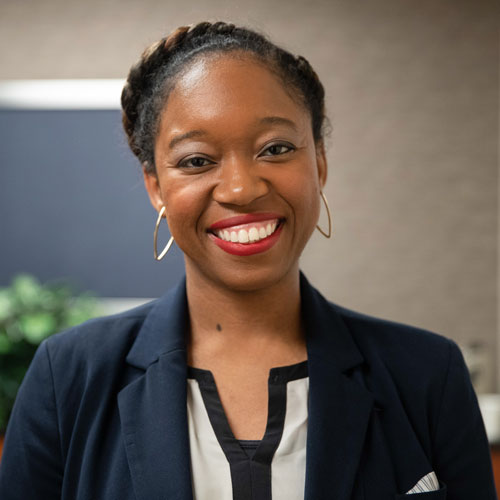
“I consider the community that I grew up in as rural due to its geography of open lands, no stop light, and a graduating high school class of 40 students—full of both natural amenities and strong social networks. Other people might characterize their rural community differently.”
– Samantha Evans, Community Development Advisor, Little Rock Zone, St. Louis Fed






